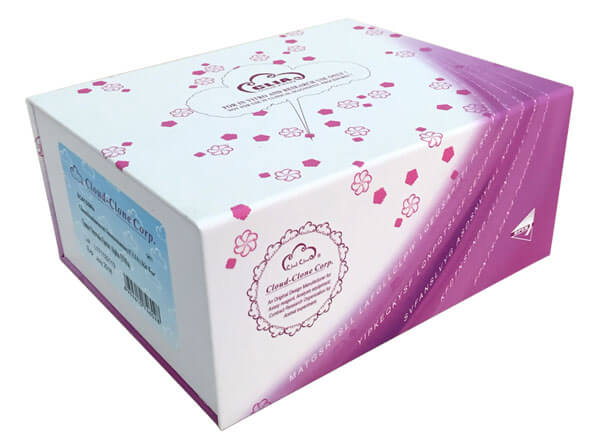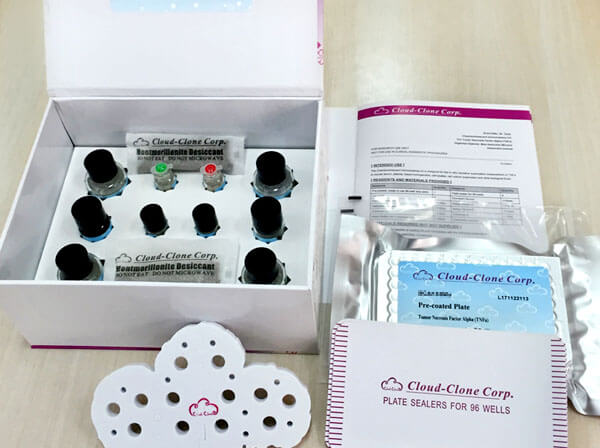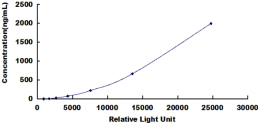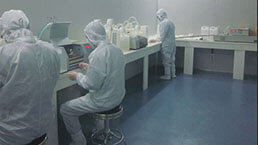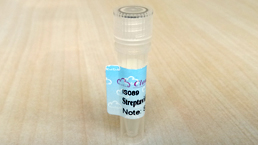CLIA Kit for Fibrinogen (FG) 

F1; FI; Fbg; Coagulation Factor I
- UOM
- FOB US$ 588.00 US$ 840.00 US$ 3,780.00 US$ 7,140.00 US$ 58,800.00
- Quantity
Overview
Properties
- Product No.SCA193Hu
- Organism SpeciesHomo sapiens (Human) Same name, Different species.
- ApplicationsChemiluminescent immunoassay for Antigen Detection.
Research use only - DownloadInstruction Manual
- Category
Sign into your account
Share a new citation as an author
Upload your experimental result
Review

Contact us
Please fill in the blank.
Recovery
Matrices listed below were spiked with certain level of recombinant Fibrinogen (FG) and the recovery rates were calculated by comparing the measured value to the expected amount of Fibrinogen (FG) in samples.
| Matrix | Recovery range (%) | Average(%) |
| sodium citrate plasma(n=5) | 85-103 | 94 |
Precision
Intra-assay Precision (Precision within an assay): 3 samples with low, middle and high level Fibrinogen (FG) were tested 20 times on one plate, respectively.
Inter-assay Precision (Precision between assays): 3 samples with low, middle and high level Fibrinogen (FG) were tested on 3 different plates, 8 replicates in each plate.
CV(%) = SD/meanX100
Intra-Assay: CV<10%
Inter-Assay: CV<12%
Linearity
The linearity of the kit was assayed by testing samples spiked with appropriate concentration of Fibrinogen (FG) and their serial dilutions. The results were demonstrated by the percentage of calculated concentration to the expected.
| Sample | 1:2 | 1:4 | 1:8 | 1:16 |
| sodium citrate plasma(n=5) | 96-103% | 99-105% | 87-97% | 93-101% |
Stability
The stability of kit is determined by the loss rate of activity. The loss rate of this kit is less than 5% within the expiration date under appropriate storage condition.
To minimize extra influence on the performance, operation procedures and lab conditions, especially room temperature, air humidity, incubator temperature should be strictly controlled. It is also strongly suggested that the whole assay is performed by the same operator from the beginning to the end.
Reagents and materials provided
| Reagents | Quantity | Reagents | Quantity |
| Pre-coated, ready to use 96-well strip plate | 1 | Plate sealer for 96 wells | 4 |
| Standard | 2 | Standard Diluent | 1×20mL |
| Detection Reagent A | 1×120µL | Assay Diluent A | 1×12mL |
| Detection Reagent B | 1×120µL | Assay Diluent B | 1×12mL |
| Substrate A | 1×10mL | Substrate B | 1×2mL |
| Wash Buffer (30 × concentrate) | 1×20mL | Instruction manual | 1 |
Assay procedure summary
1. Prepare all reagents, samples and standards;
2. Add 100µL standard or sample to each well. Incubate 1 hours at 37°C;
3. Aspirate and add 100µL prepared Detection Reagent A. Incubate 1 hour at 37°C;
4. Aspirate and wash 3 times;
5. Add 100µL prepared Detection Reagent B. Incubate 30 minutes at 37°C;
6. Aspirate and wash 5 times;
7. Add 100µL Substrate Solution. Incubate 10 minutes at 37°C;
8. Read RLU value immediately.

Test principle
The microplate provided in this kit has been pre-coated with an antibody specific to Fibrinogen (FG). Standards or samples are then added to the appropriate microplate wells with a biotin-conjugated antibody specific to Fibrinogen (FG). Next, Avidin conjugated to Horseradish Peroxidase (HRP) is added to each microplate well and incubated. Then the mixture of substrate A and B is added to generate glow light emission kinetics. Upon plate development, the intensity of the emitted light is proportional to the Fibrinogen (FG) level in the sample or standard.;
Giveaways
Increment services
Citations
- Sub-chronic Toxicity and Cardiovascular Responses in Spontaneously Hypertensive Rats after Exposure to Multiwall Carbon Nanotubes by Intratracheal InstillationPubmed:25580880
- Subchronic Toxicity and Cardiovascular Responses in Spontaneously Hypertensive Rats after Exposure to Multiwalled Carbon Nanotubes by Intratracheal InstillationPubMed: 25580880
- Biomarkers of ketosis in dairy cows at postparturient period: acute phase proteins and pro-inflammatory cytokinesdoi: 10.24099/vet.arhiv.160126c
- Biomarkeri ketoze u mliječnih krava u postpartalnom razdoblju: proteini akutne faze i proupalni citokinidoi: 10.24099/vet.arhiv.160126c
- Spike protein up-regulates inflammatory axis of both thromboinflammation and leukotriene in severe COVID-19
- CREB1 protects against the renal injury in a rat model of kidney stone disease and calcium oxalate monohydrate crystals-induced injury in NRK-52E cells33421503
- Influence of niacin application on inflammatory parameters, non-esterified fatty acids and functional status of liver in cows during early lactation



